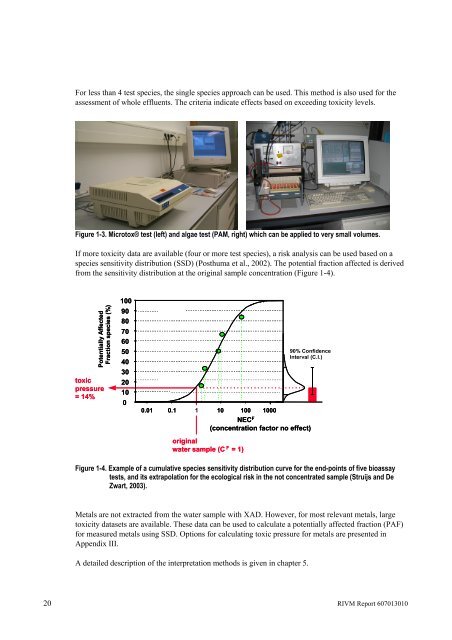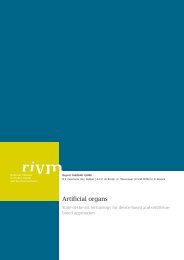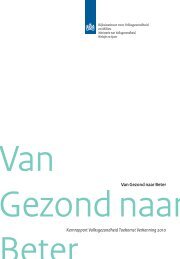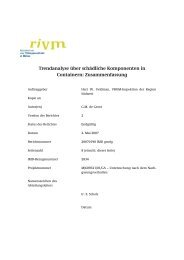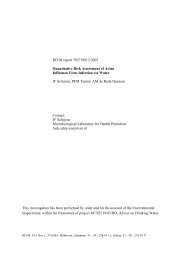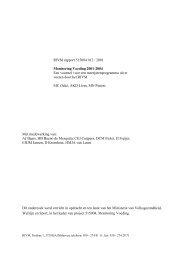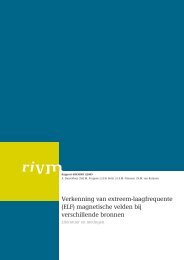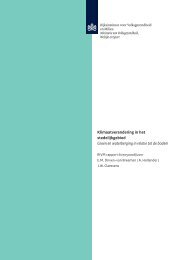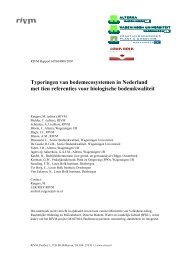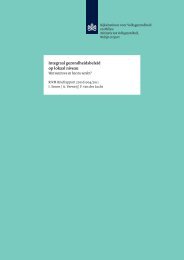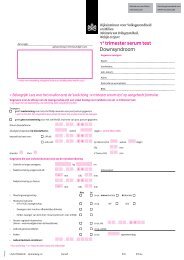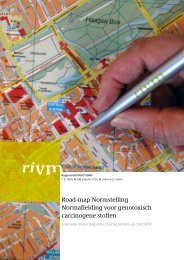Toxicity measurements in concentrated water samples - Rivm
Toxicity measurements in concentrated water samples - Rivm
Toxicity measurements in concentrated water samples - Rivm
You also want an ePaper? Increase the reach of your titles
YUMPU automatically turns print PDFs into web optimized ePapers that Google loves.
For less than 4 test species, the s<strong>in</strong>gle species approach can be used. This method is also used for the<br />
assessment of whole effluents. The criteria <strong>in</strong>dicate effects based on exceed<strong>in</strong>g toxicity levels.<br />
Figure 1-3. Microtox® test (left) and algae test (PAM, right) which can be applied to very small volumes.<br />
If more toxicity data are available (four or more test species), a risk analysis can be used based on a<br />
species sensitivity distribution (SSD) (Posthuma et al., 2002). The potential fraction affected is derived<br />
from the sensitivity distribution at the orig<strong>in</strong>al sample concentration (Figure 1-4).<br />
Potentially Affected<br />
Fraction species (%)<br />
toxic<br />
pressure<br />
= 14%<br />
100<br />
90<br />
80<br />
70<br />
60<br />
50<br />
40<br />
30<br />
20<br />
10<br />
0<br />
0.01 0.1 1 10 100 1000<br />
orig<strong>in</strong>al<br />
<strong>water</strong> sample (C F orig<strong>in</strong>al<br />
<strong>water</strong> sample (C = 1) F = 1)<br />
NECF NECF 90% Confidence<br />
Interval (C.I.)<br />
(concentration factor no effect)<br />
Figure 1-4. Example of a cumulative species sensitivity distribution curve for the end-po<strong>in</strong>ts of five bioassay<br />
tests, and its extrapolation for the ecological risk <strong>in</strong> the not <strong>concentrated</strong> sample (Struijs and De<br />
Zwart, 2003).<br />
Metals are not extracted from the <strong>water</strong> sample with XAD. However, for most relevant metals, large<br />
toxicity datasets are available. These data can be used to calculate a potentially affected fraction (PAF)<br />
for measured metals us<strong>in</strong>g SSD. Options for calculat<strong>in</strong>g toxic pressure for metals are presented <strong>in</strong><br />
Appendix III.<br />
A detailed description of the <strong>in</strong>terpretation methods is given <strong>in</strong> chapter 5.<br />
20 RIVM Report 607013010


